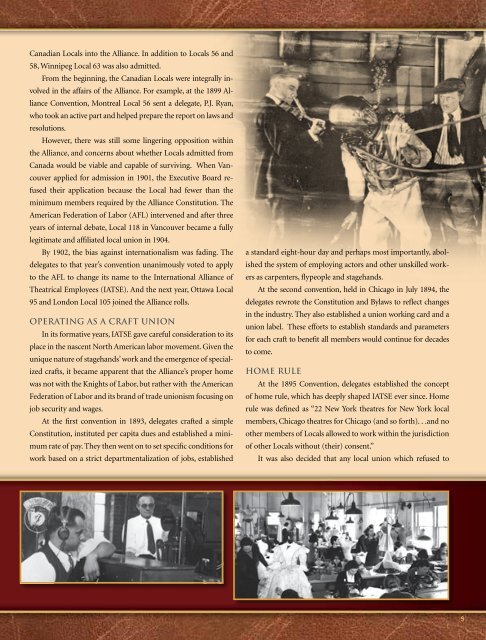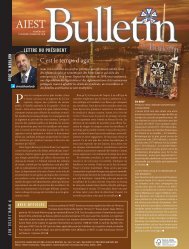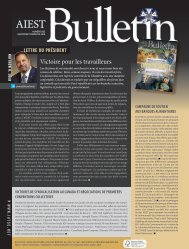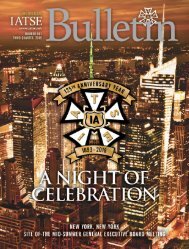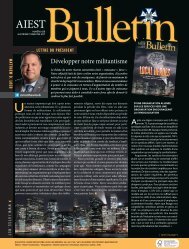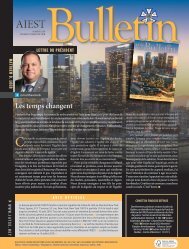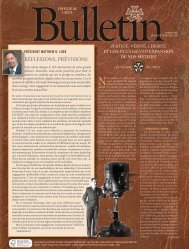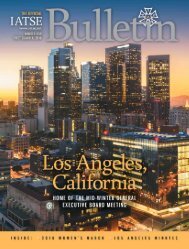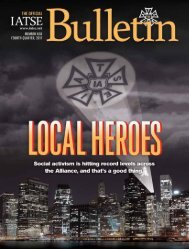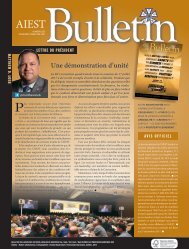IATSE-2nd2018_web
Create successful ePaper yourself
Turn your PDF publications into a flip-book with our unique Google optimized e-Paper software.
Canadian Locals into the Alliance. In addition to Locals 56 and<br />
58, Winnipeg Local 63 was also admitted.<br />
From the beginning, the Canadian Locals were integrally involved<br />
in the affairs of the Alliance. For example, at the 1899 Alliance<br />
Convention, Montreal Local 56 sent a delegate, P.J. Ryan,<br />
who took an active part and helped prepare the report on laws and<br />
resolutions.<br />
However, there was still some lingering opposition within<br />
the Alliance, and concerns about whether Locals admitted from<br />
Canada would be viable and capable of surviving. When Vancouver<br />
applied for admission in 1901, the Executive Board refused<br />
their application because the Local had fewer than the<br />
minimum members required by the Alliance Constitution. The<br />
American Federation of Labor (AFL) intervened and after three<br />
years of internal debate, Local 118 in Vancouver became a fully<br />
legitimate and affiliated local union in 1904.<br />
By 1902, the bias against internationalism was fading. The<br />
delegates to that year’s convention unanimously voted to apply<br />
to the AFL to change its name to the International Alliance of<br />
Theatrical Employees (<strong>IATSE</strong>). And the next year, Ottawa Local<br />
95 and London Local 105 joined the Alliance rolls.<br />
OPERATING AS A CRAFT UNION<br />
In its formative years, <strong>IATSE</strong> gave careful consideration to its<br />
place in the nascent North American labor movement. Given the<br />
unique nature of stagehands’ work and the emergence of specialized<br />
crafts, it became apparent that the Alliance’s proper home<br />
was not with the Knights of Labor, but rather with the American<br />
Federation of Labor and its brand of trade unionism focusing on<br />
job security and wages.<br />
At the first convention in 1893, delegates crafted a simple<br />
Constitution, instituted per capita dues and established a minimum<br />
rate of pay. They then went on to set specific conditions for<br />
work based on a strict departmentalization of jobs, established<br />
a standard eight-hour day and perhaps most importantly, abolished<br />
the system of employing actors and other unskilled workers<br />
as carpenters, flypeople and stagehands.<br />
At the second convention, held in Chicago in July 1894, the<br />
delegates rewrote the Constitution and Bylaws to reflect changes<br />
in the industry. They also established a union working card and a<br />
union label. These efforts to establish standards and parameters<br />
for each craft to benefit all members would continue for decades<br />
to come.<br />
HOME RULE<br />
At the 1895 Convention, delegates established the concept<br />
of home rule, which has deeply shaped <strong>IATSE</strong> ever since. Home<br />
rule was defined as “22 New York theatres for New York local<br />
members, Chicago theatres for Chicago (and so forth). . .and no<br />
other members of Locals allowed to work within the jurisdiction<br />
of other Locals without (their) consent.”<br />
It was also decided that any local union which refused to<br />
9


